“Hi, they’ve got a Canon EOS 300 with a 28-105 lens and they want £5 for it. Do you want it?”
Yet another phone call from my wife from the local charity shop (or Charlie shop as my kids call them). I have enough EOS film cameras, I really don’t need another one, but a 28-105 lens (USM as it turned out) for £5? It was too good a deal to pass up, so I asked her to buy it. I figured I’d run a roll of film through the camera and then get rid of it.
Released in 1999 the Canon EOS 300 (also known as the Kiss III and Rebel 2000 around the world) arrived just as digital was starting to gain an expensive foothold in photography. It is a pretty plastic affair and is clearly aimed at the amateur photographer. I could have done a “Five Frames …” with it but in reality it would simply have been “Five Frames with whichever Canon lens I happened to have taken these pictures with”. And that would have been a shame because it would have relegated the Canon EOS 300 to just being a film carrier; which would not have done it justice.
You see, the Canon EOS 300 reminds me of something Jeremy Clarkson – he of Top Gear and The Grand Tour fame (or infamy depending on your view of JC) – once said. In one of his asides to camera he asked what was the best car you could buy? Of course you might expect him to say a Ferrari, a Rolls-Royce or perhaps a Range Rover. But what he actually said was, “the Ford Fiesta” (or whichever small car he happened to be driving at the time). His point was that small cars had come a long way in terms of creature comforts. In the 1980’s a base model car was really basic: plain seats, wind-up windows and a distinct lack of creature comforts. But modern small cars are extremely well specified, with comfortable upholstery, electric windows and air conditioning as standard. Features that you could only have got in an expensive, luxury model in the 1980s. In other words, the reason that the Ford Fiesta was the best car you could buy was not because it had oodles of power or because it was the last word in luxurious refinement but simply because you got an awful lot of car for not a lot of money. And so instead of just being for the very well off such creature comforts were within reach of us, the great unwashed.
Specifications
So what has that got to do with the Canon EOS 300? Well, behind the polycarbonate facade lies a very well specified and enjoyable camera.
In the hand the Canon EOS 300 is quite petite, smaller and lighter than my other EOS film SLRs (620, 1000FN and 30). It has a plastic lens mount but it is certainly feels robust enough when I change lenses. It’s very comfortable to hold and use. The viewfinder is nice and bright and has plenty of information to keep you on top of your picture taking. There are seven focus points and focus is one-shot or AI-Focus (continuous) depending on the mode you choose. Unfortunately it is not user selectable but is AI-Focus in all PASM modes.
Exposure is calculated using a 35-zone evaluative meter for most modes, with partial being available when the * button on the back is pressed. In manual mode the camera defaults to centre-weighted metering.
It also has a pop-up flash which syncs at 1/90th of a second. However, it also has a neat flash trick up its sleeve. If you partner it with a Canon 220 EX or 380 EX Speedlite, and move the switch on the flash to Hi, then it will sync with the flash all the way up to 1/2000th of a second! Now, you will lose flash power at these higher speeds but if you are out in bright sunshine and looking for some fill-flash then you’re good to go. As luck would have it, I already have the 380 EX and so I had a go with this and managed to get some nicely fill-flashed shots at 1/250th of a second. Neat.
Power is supplied by two lithium CR2 batteries which, incidentally, cost me more than the camera!
For more information on this and the other specifications you can download the manual with a donation of $3 from Mike Butkus – money well spent.
Camera Tour
Looking down on the camera on the top plate and moving from left to right there is the command dial with which you select the camera mode, the hotshoe, some small black function buttons, an LCD, the main dial (which sits vertically behind the shutter button and has been a mainstay of Canon cameras since the venerable T90) and the shutter button on top of the grip. In addition, and at the back of the camera, are the Auto Exposure lock (*) and Exposure Compensation (AV +/-) buttons; more on which later.
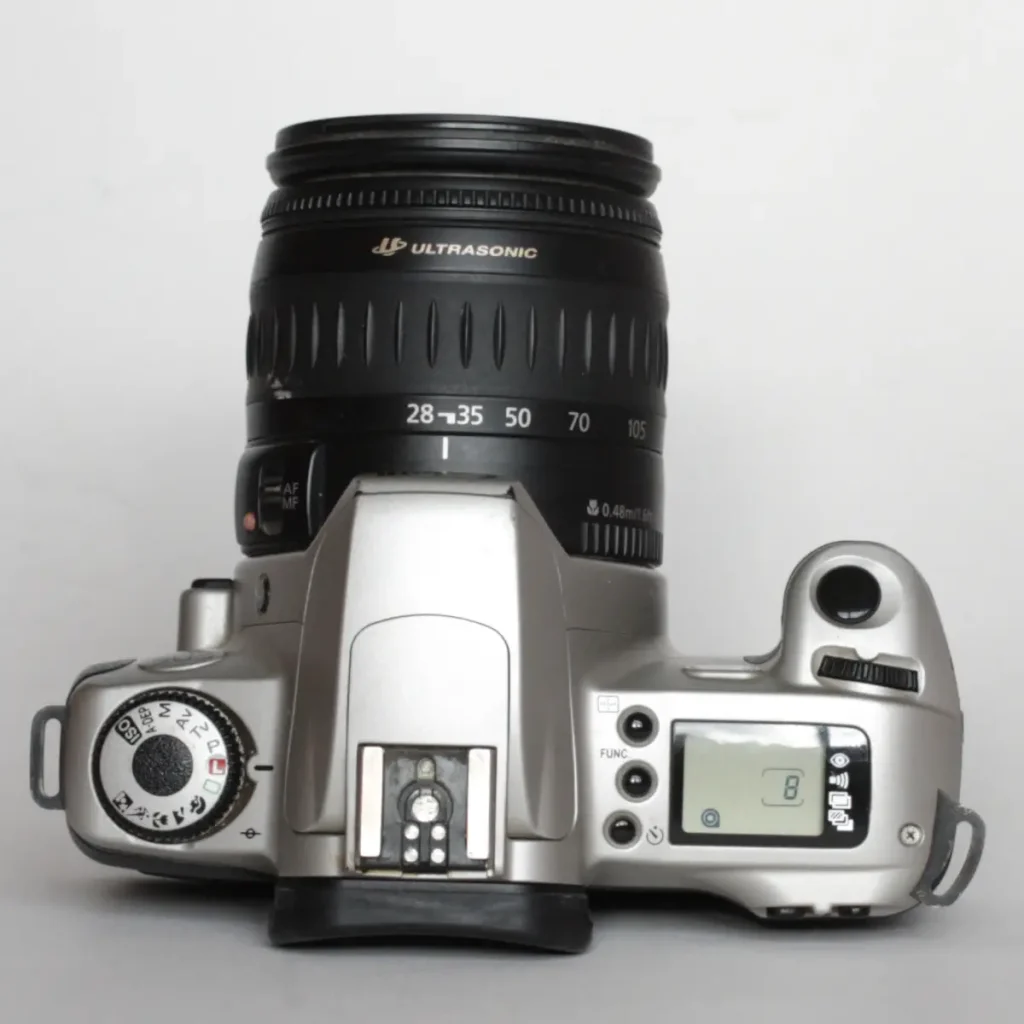
The Canon EOS 300 Command Dial
Then there is the command dial on the left which sets the mode for the camera. There are three distinct areas:
- Green Rectangle – if you’re coming up from a point and shoot and are finding all the bells and whistles of an SLR a bit too much, then simply set the mode dial to green rectangle and fire away, the camera will do the rest. The other advantage of this is that it allows you to concentrate on taking pictures rather than obsessing over which f-stop or shutter speed to use. It’s just as important to learn about what makes a good photo as it is to learn about the geeky technicalities of photography.
- Basic Zone Modes – once you’ve taken a few photos and realised that some subjects benefit from different f-stops and shutter speeds then you can select the basic zone that best suits your subject – portrait, landscape, macro, sport or depth – and again let the camera do the rest.
- Auto and Manual Modes – once you’ve built up a little more confidence you can move onto the standard PASM modes – Program, Aperture Priority, Shutter Priority and, of course, full Manual. You can now give the camera as much or as little control as you like. Just a note, in manual mode you change shutter speed with the main dial next to the shutter button and to change f-stop you place your thumb on the exposure compensation (AV +/-) button, which is on the back of the camera next to your right cheek, and rotate the main dial.
On the back of the Canon EOS 300 and on the top-plate there are some small black buttons:
- Autofocus Points – choose all or any one of the 7 AF points. That’s quite a lot for a ‘low’ spec camera.
- Function Button – four custom functions to choose from: red-eye reduction, autofocus beep, set up to nine multiple exposures on a single frame and auto-exposure bracketing.
- Self Timer – 10 seconds
- Auto Exposure (AE) Lock (*) – great for backlit subjects this meters from just the centre of the viewfinder.
- Exposure Compensation (AV +/-) – up to 2 stops either way for shooting black cats in coal cellars (underexpose) or arctic foxes in a snowscape (overexpose). Most likely you will take pictures of people’s faces against a bright background in which case you overexpose or use fill-flash.
You also get a depth of field preview button on the left side of the lens and the ability to rewind a roll of film part-way through with the small indented button on the left side.
In Operation
To load a film simply open the back, pop in your film, stretch the leader across to the orange mark, close the back and turn the camera on. The camera will wind out the whole roll and then rewind one frame at a time as you take pictures. So chronologically frame 36 will be your first. This was a bit of a gimmick that Canon used to help prevent the dreaded ‘open the back without rewinding the film’ scenario. Nice idea but, to be honest, whenever I’ve done that I’ve only ever lost 2 or 3 shots anyway, so it’s no biggie. One disadvantage is that you will only ever get 36 exposures; there is no squeezing 37 or 38 shots out of a roll of 36 as you can on most manual film cameras.
In operation I was impressed with how easy the camera is to operate once you’ve decided which mode to use. Select your exposure, using the AE lock button if you want to meter from the centre of the viewfinder, half-press the shutter to focus and then fully press to take your picture. The autofocus is much quicker than on my single-AF-point EOS 620, but that camera is nearly fifteen years older. I think I also prefer it to my EOS 30, which is slightly newer than the 300 and is better specified, but is heavier and has more controls to set up.
And, of course, it’s a camera that also gives you access to the fantastic range of Canon EF lenses and accessories.
Thoughts
So, is this a great camera? Well, if your idea of great is a Leica-M body with a Summicron lens then it is definitely not a great camera. Or perhaps you prefer a camera hewn from a solid block of Unobtainium and able to stop a rifle bullet should you stray into a war zone? Again, no. It is not a collectable camera, it has none of the idiosyncrasies that keep camera nerds happy, and it wasn’t designed by one of the gurus of camera design.
It is simply a relatively well specified, consumer-grade SLR made in the dying days of film camera manufacture. So this gives it two big advantages. Firstly, it has the benefit of 150 years of film-camera design behind it, so it contains a lot of tech to keep the budding film photographer happy. And secondly, so many were made that you can pick one up pretty cheaply.
There is a principle in software engineering which states “Don’t make me think.” In other words, when you are designing a piece of software for other people to use, the more complicated you make it the more they have to think in order to get it to do what they want it to do and hence the less likely they are to enjoy using it. A modern example is the Sony A7 series of digital cameras. Every reviewer says they are amazing cameras, only for each one of them to go on and complain bitterly about the menu system. Because they have to think too hard to make it do what they want, when all they want to do is set it up quickly and take pictures with it.
I feel that the Canon EOS 300 is a ‘don’t think’ camera, i.e. if I’m in a rush and just need a camera, and I don’t have time to think about which camera in my collection will be most suitable for the photos I want to take, I can chuck it in a bag with a lens or two and I’m good to go. The same is true in operation. The camera “gets out of the way” by being very straightforward when actually taking pictures. So in many ways this is a great camera.
So this won’t excite the cognoscenti, nor will you get any “ooohs” or “aaahs” if you bring it out at your next beer and cameras meet-up. But if you’re a student and you need a film camera for your photography course, or you’re a digital photographer looking to ‘have a go’ with a film camera, or even a seasoned amateur looking for a ‘don’t make me think’ camera, then you really can’t go wrong with a camera like this, especially if you already have a couple of Canon EF lenses. Just be sure not to use any digital-only EF-S lenses with it, as you may well damage something.
Photos
Kosmo Foto Mono 100 – stand developed in Rodinal 1:100 for one hour, and Kodak ColorPlus 200 and Kodak Gold 200 – Bellini C41 kit. All scanned at home on my Epson 4870 scanner.

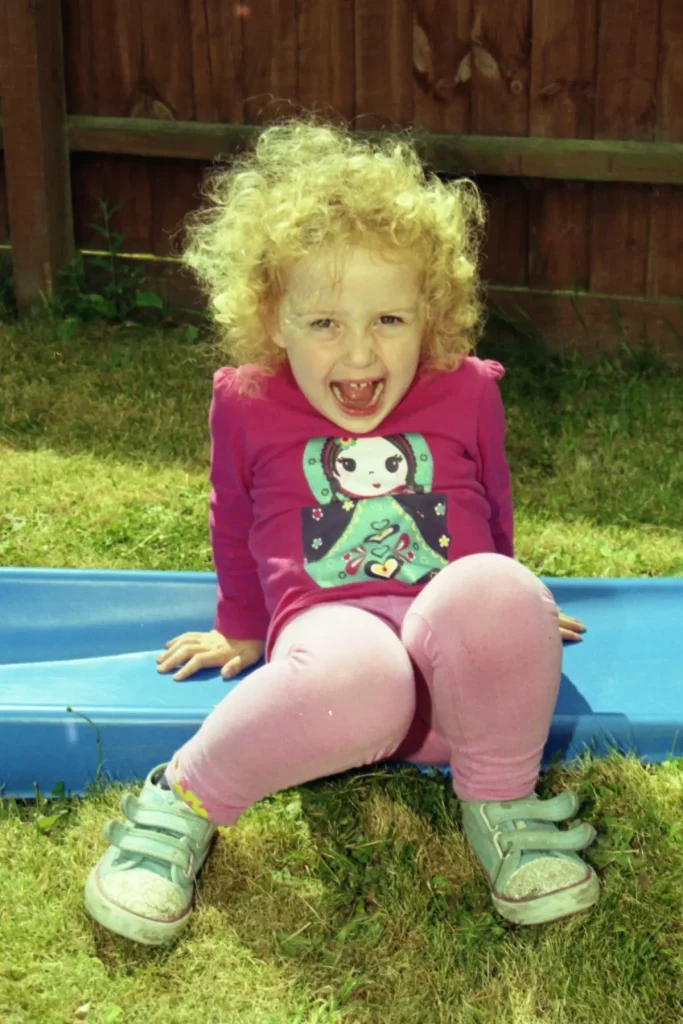
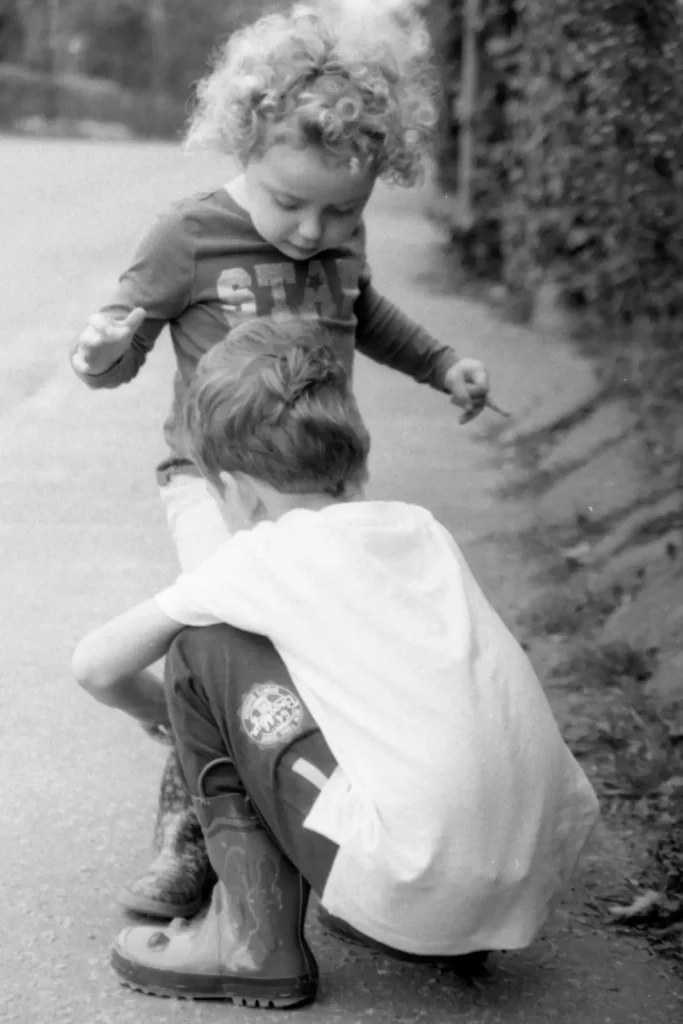


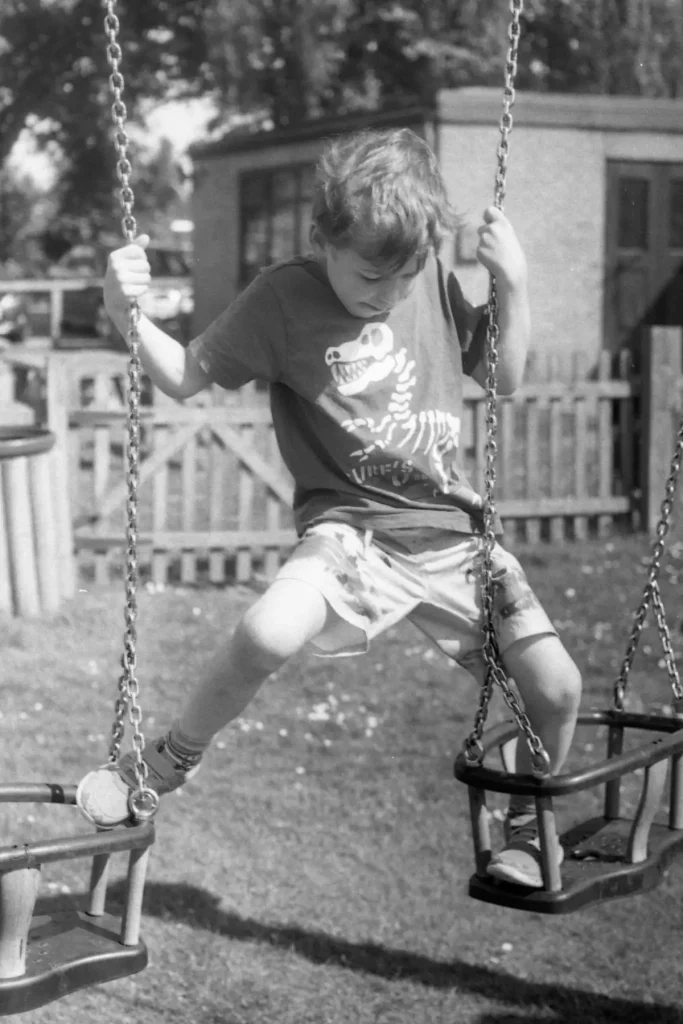
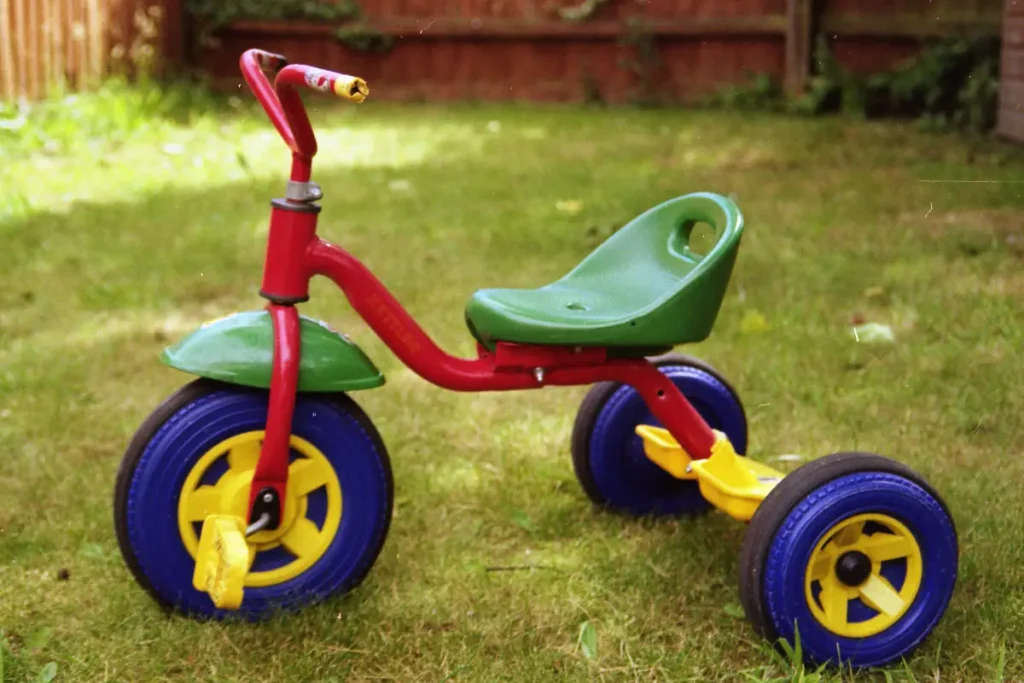
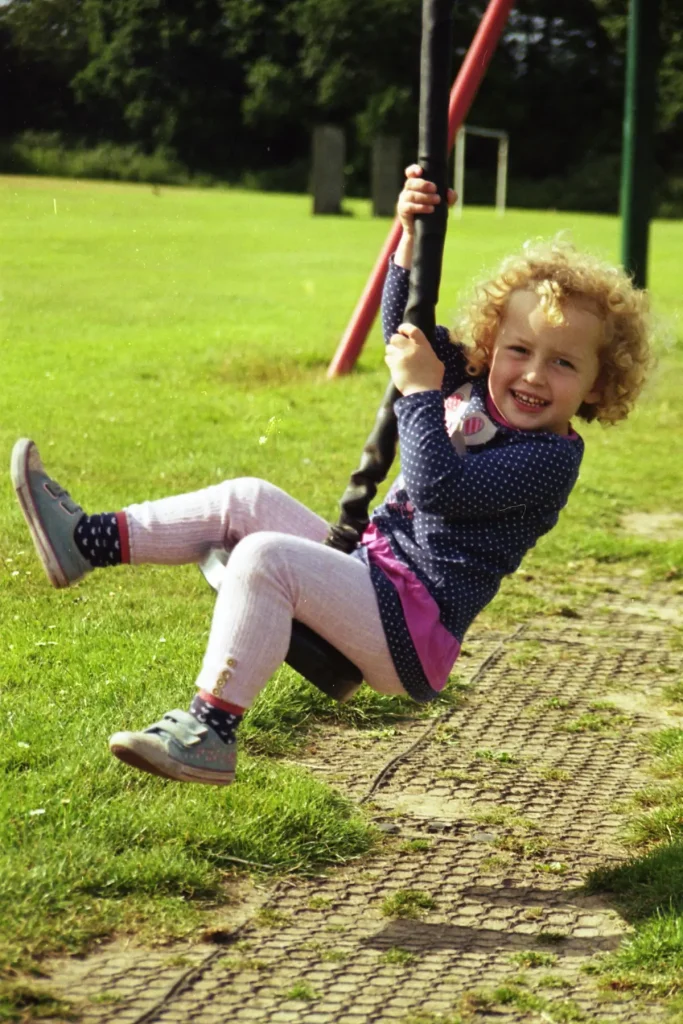
Conclusions
So having started this review by dismissing the Canon EOS 300 out of hand I find myself liking it an awful lot. This really is a great camera. It sits in a sweet spot in the EOS range, with better performance and a smaller size than the early models such as the EOS 620, whilst being less complex than the more serious models like the EOS 30. So in that regard it’s something of a Goldilocks camera, it’s just right. It is the sort of camera that is capable enough that it will happily take you from beginner to knowledgeable amateur. And it costs so little that you don’t have to worry too much about whether it gets damaged or lost. So just like Jezza’s small car, you’re getting an awful lot of camera for not a lot of money.
If you grow to enjoy film photography then it is unlikely to be your last proper camera; there are so many camera types to try and enjoy, from compacts to rangefinders to medium and large format. But as a first film camera you really can’t go wrong.
So there you have it: the Canon EOS 300, not a great camera, but a great camera.
Share this post:
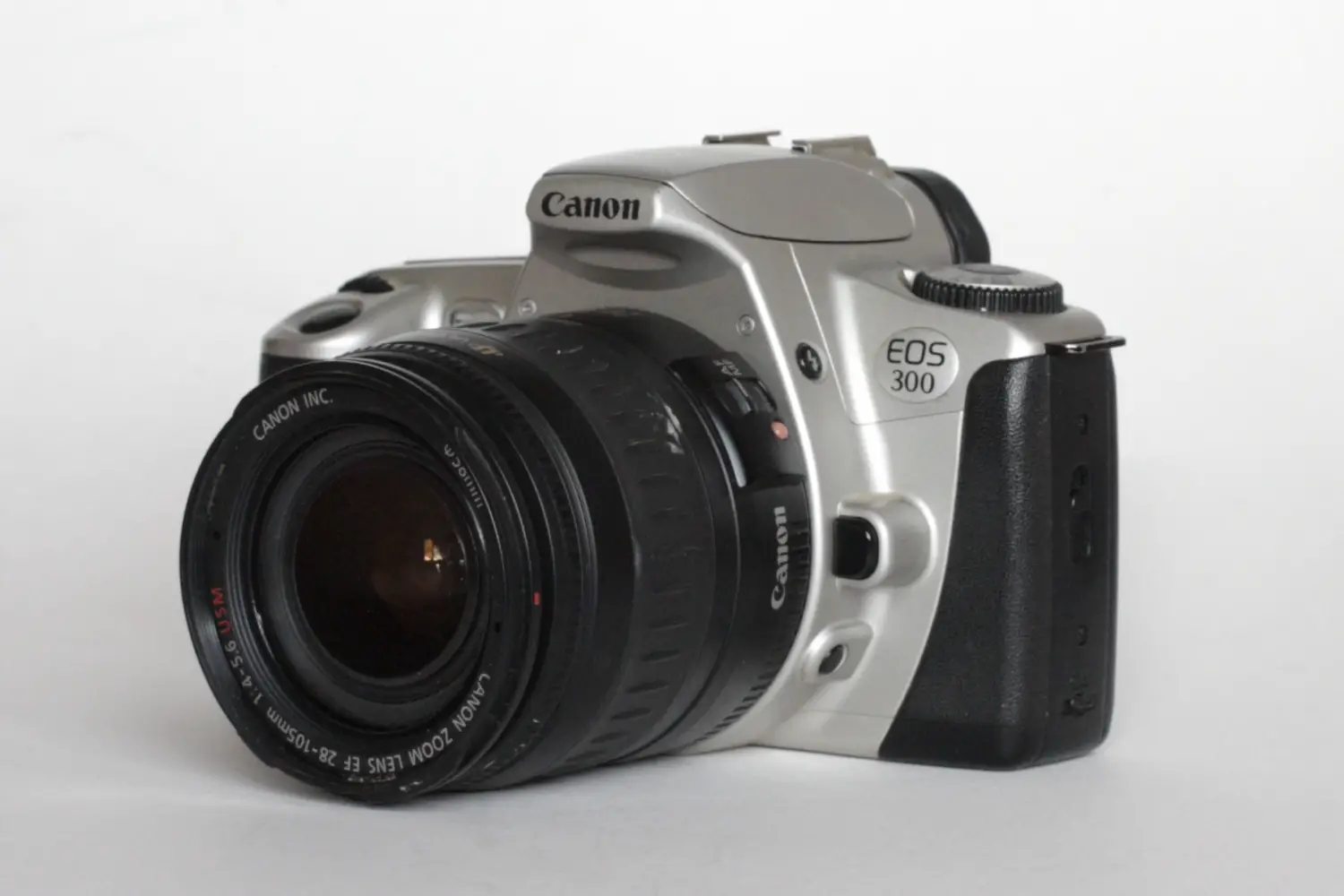








Comments
Victor Cachia on Canon EOS 300 Review – Not a great camera, but a great camera! – By Malcolm Myers
Comment posted: 01/09/2018
Comment posted: 01/09/2018
Leo Tam on Canon EOS 300 Review – Not a great camera, but a great camera! – By Malcolm Myers
Comment posted: 01/09/2018
I love the 300x and 40 stm combo - in your face, expensive point shoots
Comment posted: 01/09/2018
Comment posted: 01/09/2018
Luis Sandoval on Canon EOS 300 Review – Not a great camera, but a great camera! – By Malcolm Myers
Comment posted: 02/09/2018
Comment posted: 02/09/2018
Kevin Thomas on Canon EOS 300 Review – Not a great camera, but a great camera! – By Malcolm Myers
Comment posted: 02/09/2018
Malcolm Myers on Canon EOS 300 Review – Not a great camera, but a great camera! – By Malcolm Myers
Comment posted: 03/09/2018
Johnny on Canon EOS 300 Review – Not a great camera, but a great camera! – By Malcolm Myers
Comment posted: 03/09/2018
Steve Smith on Canon EOS 300 Review – Not a great camera, but a great camera! – By Malcolm Myers
Comment posted: 05/11/2018
Nigel Cliff on Canon EOS 300 Review – Not a great camera, but a great camera! – By Malcolm Myers
Comment posted: 03/01/2019
Comment posted: 03/01/2019
Silje on Canon EOS 300 Review – Not a great camera, but a great camera! – By Malcolm Myers
Comment posted: 23/01/2019
Comment posted: 23/01/2019
Comment posted: 23/01/2019
Comment posted: 23/01/2019
Jacqueline Holmes on Canon EOS 300 Review – Not a great camera, but a great camera! – By Malcolm Myers
Comment posted: 14/04/2019
MJ on Canon EOS 300 Review – Not a great camera, but a great camera! – By Malcolm Myers
Comment posted: 12/12/2019
Flip the Frog on Canon EOS 300 Review – Not a great camera, but a great camera! – By Malcolm Myers
Comment posted: 14/01/2020
The Canon 300 was followed by the 300v and the 300x, The 300x was released in 2004 and was the final Canon film camera. It has a 1/4000 shutter (300 goes to 1/2000), a bigger LCD display on the back instead of the top, and a much better button layout, including a 4-way controller for setting the focus point.
Nikon F100 review - Kosmo Foto on Canon EOS 300 Review – Not a great camera, but a great camera! – By Malcolm Myers
Comment posted: 14/05/2020
Alex Filipe on Canon EOS 300 Review – Not a great camera, but a great camera! – By Malcolm Myers
Comment posted: 27/07/2020
The Kazakhstan collector bringing Soviet cameras back to life - Kosmo Foto on Canon EOS 300 Review – Not a great camera, but a great camera! – By Malcolm Myers
Comment posted: 22/01/2021